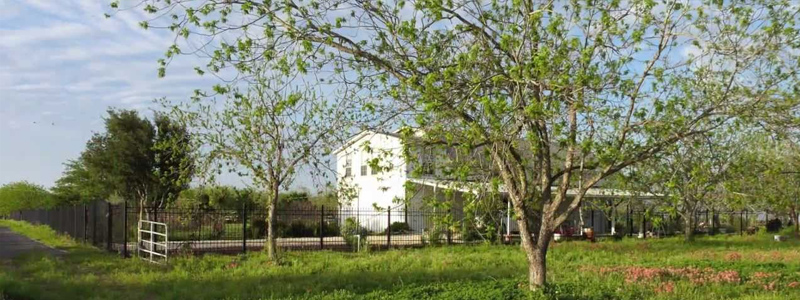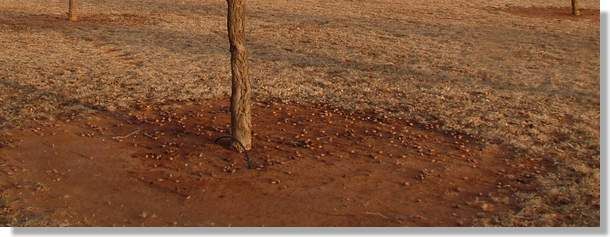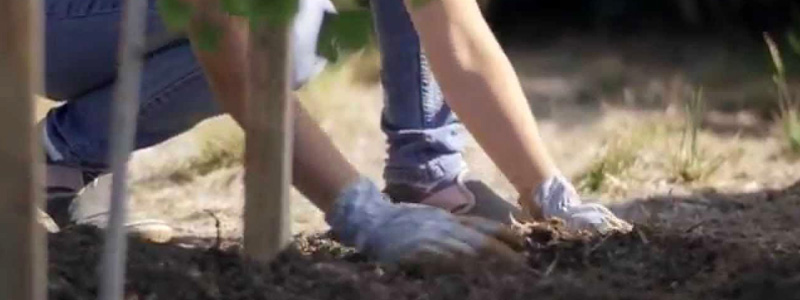If you don’t do anything else ‘by the book’ when it comes to caring for your pecan trees, make sure to water, water, and water.
I will be the first to tell you that it’s ok to under-fertilize, to miss a zinc application, to let insects get a little out of hand, but I will not give you my ‘thumbs up’ when you decide not to water your trees properly. If you water as you should, and do nothing else to your trees the entire growing season, chances are good that you will produce an acceptable pecan crop.
How Much Water Does a Pecan Tree Need?
To calculate the amount of water needed, various factors need to be taken into account. Naturally, the size of your tree(s) plays a factor. The time of year, of course, must be considered. The type of soil your tree(s) are planted in. It’s a no-brainer that smaller, younger pecan trees will require less water than mature trees, however, do not underestimate their water requirements. A mature tree has an extensive root system to harvest moisture from a substantial area while a young tree’s roots may only spread two or three feet from the trunk. A safe starting point when determining the water needs of a newly planted tree during its first growing season is one gallon of water per day.
This is not to say you should pour a milk jug of water on your tree daily, but when you do water (weekly is good for young trees,) water sufficiently to carry your tree through till the next watering. For the first three years of your tree’s life, I recommend at least one gallon of water per day for each year of your tree’s age. From age four to age seven, double that requirement, except during the hottest months of the growing season. Then you should double what you just doubled. Lost? At age three, your tree should receive three gallons of water per day. (twenty-one gallons per week or forty-two gallons if you water bi-weekly.)
At age four, your tree should receive eight gallons of water per day, except when the temperatures approach ninety-five degrees or higher (or winds deplete the soil moisture.) Once hot weather sets in, your four-year-old tree should be receiving around sixteen gallons of water per day.
By age seven, your pecan tree is beginning to reach ‘puberty,’ that is, it is in its pre-production stage of growth. Your tree is larger (taller, wider) so more energy is required. Your tree is approaching the nut-bearing stage in its life which will require substantial amounts of water. You must now determine how much water it will take to keep the entire area moist beneath the canopy area of your pecan tree…to a depth of four feet. Your initial watering every spring should be a deep watering to saturate the soil beneath your tree.

After that, you need to water whenever 60% of the initial water has been depleted. To judge when to water, you must take the soil type into consideration. Sandy soil can only store approximately one inch of moisture per one foot of soil depth whereas clay soils store three times as much. So, if you receive a one-inch rain, and your tree is planted in sandy soil, only the first foot is storing any moisture. It is important to understand that for the most part, the rain just doesn’t count when you are talking about watering pecan trees.
I think you should get into the mindset that you probably aren’t watering your pecan trees enough. A producing pecan tree over the age of ten will need upwards of 150 to 300 gallons of water per day during the hottest part of the growing season. From April thru June, we generally water our trees ten hours per week. (Our ‘drip irrigation’ system has been modified to more of a ‘water hose running full blast’ at the base of our trees.)
During July thru September, we water sixteen to eighteen hours per week per tree. When the harvest comes, we can still identify trees that didn’t receive sufficient water. They may have dropped their nuts early, produced smaller pecans, fewer pecans, or the pecan hulls failed to open properly (sticktights.)
Whether you are contemplating planting a pecan orchard or purchasing an existing one, water availability should be a major factor in your decision. A pecan orchard must have an unlimited source of water if it is to survive AND..you must make a commitment to see to it your trees receive the amount of water they will need to produce a sufficient crop of pecans.
Pecan Orchard Irrigation & Alternative Watering Methods
I’ve been known to say that both drip irrigation and utilizing a sprinkler system are the right way to water your pecan orchard. I’ll also tell you they’re both the wrong way. Just a year or so after I purchased our orchard, I looked out my front door and saw an old man knelt down on the ground by one of my trees at the edge of the orchard digging in the dirt. I scurried over toward him and stood over him awaiting some sort of explanation as to what exactly he was doing. Without looking up or even introducing himself, he told me that my neighbor had consulted him about gopher problems and he had decided they were coming from my orchard. As I watched him carefully set a trap, he declared gruffly, “These pecan trees will never amount to nothin’. You’re using drip irrigation…they gotta have a sprinkler system.” I coaxed him to divulge his identity and discovered he owned a small five-acre pecan orchard just down the road from me. I had noticed the sprinkler system in his orchard and had caught myself admiring the condition of his trees from time to time as I drove past. The brief conversation left me troubled about my drip irrigation for quite some time. (Somewhere, someday, I’ll tell you a funny story about this old man fighting an EMU that wondered up in his orchard.)

I began checking into sprinkler systems and found that they were just too cost-prohibitive for our little operation. I also determined that a sprinkler system would be somewhat insufficient and more costly to operate. Between a third to half of the water used is lost to evaporation. At least another third of the water is placed where the trees cannot utilize it, being in the middle of the tree rows, where tree roots cannot reach it. I also concluded that irrigating the entire orchard would encourage insects to take up residence in the wet soil throughout the orchard and make weed control a huge undertaking. Once I had accepted the fact that my drip system would have to suffice, I began contemplating how I could make it work.
The old man was right, and I knew it. The way our system was set up, water was meant to trickle to all one hundred and something trees simultaneously. It wasn’t working. Some trees watered well, while others received no water at all, especially those at the end of the orchard.
I began my modification by removing the emitters from every polyethylene lateral line running to the base of the trees. I then cut the end off the line with a pocket knife. I tested my modification and saw that many of the trees still did not receive water.
The previous owner had come up with an ingenious idea to deliver water to the orchard using the force of gravity. He had constructed a ‘water tower’ above the good house, a tank holding 2500 gallons of water. A cut-off valve controlled the flow to the orchard through a two-inch PVC pipe which ran two feet below the ground. At each row of trees, a one inch PVC pipe diverted water down the tree row. The only flaw in the system was insufficient pressure to move the water back up to ground level through the 3/8 inch polyethylene lateral line.
Armed with a plastic bag of PVC elbows, one inch PVC pipe, ball valves, and a shovel, I set out one spring to overhaul my drip irrigation system. I found the one-inch pipe supplying each tree row and installed a cut-off at ground level. This would enable me to water only one or two rows of trees at a time. After completing my work, I tested the system, and with the new control valves in place and the ends cut off the polylines, it worked like a charm.
I can’t claim to have a drip irrigation system. It’s more like a super-charged flood irrigation system, only we don’t flood the entire orchard, just the immediate area around our pecan trees. We have no water runoff, no wasted water, no wasted electricity putting water where it’s not needed. Our irrigation system is an energy-efficient, natural resource conscious, heck..in my opinion, it’s the perfect irrigation system.
So the old man was partly right and partly wrong. A drip irrigation system was obviously not going to do the job, but it didn’t take a sprinkler system to make my pecan orchard thrive.
I don’t consider myself to be necessarily ecologically minded, but I don’t see the need to wastewater. At the same time, I fully understand the importance of water to successful pecan production. I also know that out here in west Texas that our trees won’t survive if our underground water source is depleted. Matter of fact, West Texas won’t survive without water. If you feel you are perhaps pulling more water out of the ground than necessary, if you’re watering more dirt than trees, or if you’re allowing a substantial amount of water to evaporate before it even hits the dirt…maybe you ought to something about it.

